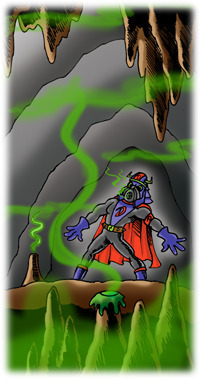Don M. Winn's Blog, page 30
August 29, 2013
The Power of Imagination: Thinking Symbolically
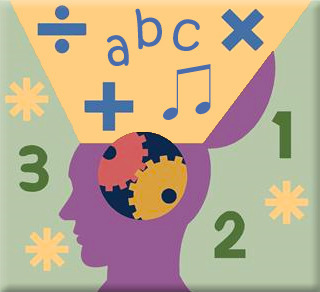 Our brains are amazingly complex. As an example, consider our ability to think symbolically.
Our brains are amazingly complex. As an example, consider our ability to think symbolically.
The use of symbols to represent things is so deeply ingrained in our daily lives that we tend to take it for granted. It’s rare for us to stop and reflect that certain shapes represent letters that represent sounds that combine to form words that represent things and people and places and ideas and actions and feelings.
Other kinds of shapes represent numbers and numerical symbols, which represent quantities of things and the different ways those quantities can interact (2+3=5). Still other symbols represent time values and frequencies and when they are interpreted by someone who can decode those symbols, it results in beautiful music.
Our constant use of symbols and representation is an awe-inspiring example of the complexities of the human brain. Nothing is exactly what it seems. Almost everything represents something else. And yet most of us are perfectly fine with dealing with this complex system of codes and symbols and linked meanings every day. Even if we have some trouble doing the actual decoding of all these symbols, we all seem to be pretty comfortable with the idea that using symbols is a part of life.
How does a child make the developmental leap that enables them to relate something literal—a symbol they can see—to something abstract—the idea that symbol represents? What helps them get used to the idea that one thing could actually represent something else—even if those two things have little in common?
The answer is imagination.
Think about it. Maybe you remember lying in the grass on a warm summer afternoon, gazing up at the clouds with your friends and imagining animal shapes in the clouds as they drifted by. Or maybe you liked having pretend tea parties where there may have been nothing more than water in the cups, but you could just imagine you were eating all your favorite treats. Or maybe you remember building temporary play houses or forts in the back yard using just odds and ends of whatever was at hand. During my own childhood, one of the greatest gifts of all was a good-sized cardboard box, which could become anything I wanted – a race car, a steam engine, a tent in the wilderness surrounded by bears.
All of these activities require children to use their imaginations to envision how one thing can represent something else. It also provides them with great training to live in our highly symbolic society.
Here are a few ideas on how to encourage kids to give their imaginations a good workout when it comes to being symbolic thinkers:
Encourage your child to use everyday, childproof objects around the house as toys. (Quick example: The cardboard tube from a roll of paper towels can become a microphone, a telescope, a laser beam, etc.)
Consider limiting the number of specialized single-purpose toys that you buy your kids—by which I mean toys that only do one thing and that kids can’t really play with in a variety of situations. Often these specialized toys are linked to movies or television shows, and while there’s nothing wrong with these kinds of toys, the tendency may be for kids to simply use them to reenact scenes from the shows, which limits their use of imagination.
Read with your children and then ask them questions about the characters and the story. Ask them to imagine themselves in the story as the main character. Would they follow the story? Would they do something differently? Ask them if they know real people who have had something in common with the characters in the story. This can help them see how characters in books can symbolize real people’s situations and adventures.
Please use the link below to follow this blog via email.


August 22, 2013
The Power of Imagination: Psychosocial Benefits
 To continue this summer’s theme on imagination, I did a little research and turned up a few more ways that kids benefit from using their imaginations. Today these benefits fall under the category of psychosocial benefits. I don’t use the word psychosocial very often, and maybe you don’t either, so I’ll sum it up quickly—it is not a negative term. It’s just a term used to describe the combined psychological and social aspects of something. So how does an active imagination benefit kids both psychologically and socially?
To continue this summer’s theme on imagination, I did a little research and turned up a few more ways that kids benefit from using their imaginations. Today these benefits fall under the category of psychosocial benefits. I don’t use the word psychosocial very often, and maybe you don’t either, so I’ll sum it up quickly—it is not a negative term. It’s just a term used to describe the combined psychological and social aspects of something. So how does an active imagination benefit kids both psychologically and socially?
Empathy. Pretending is really role-playing, a tool used by many therapists to help people explore relationships and become more empathetic with another person’s point of view. Even a simple game like playing house allows children to step into the role of parents, and get a sense of what it feels like to be the ones in charge of taking care of others.
The empathy that can develop as a result of active imagining will serve children well as they grow. For example, they will be able to imagine how it would feel to be left out of an activity, or how it would feel when someone was in need and not being helped, or even how it would feel for someone to lose a beloved family pet. That awareness will temper their relationships with others and increase their sensitivity to the needs of others.
Communication. When kids play imaginative, make-believe games, they often tend to do a lot of talking. If they’re playing alone, they may narrate the story of their game out loud and invent (and act out) the dialogue for the different characters that are part of their game. If they’re involved in imaginative play with others, they may also take breaks from the game to come up with new ideas, plan the next phase of their story together, or find/invent some kind of prop that will fit into the storyline of their game.
All of these things improve children’s abilities to communicate. Narrating a story as they play helps them learn to put thoughts into words. Creating dialogue for their games gives them the opportunity to experiment with conversation or to use new vocabulary words. Playing imaginative role-playing games with others helps kids to become better at goal-oriented teamwork. It will probably also give them a lot of opportunities to work at conflict resolution, if you know what I mean. Kids are kids, after all.
What about imaginary friends? Maybe your children are some of the 35 to 40% of children who take imagination one step further and actually invent an invisible friend? Don’t worry, this is not a sign of emotional problems. In fact, unless the imaginary friend idea is causing your child to show disruptive behaviors, it’s best as parents to just relax and enjoy this time with your children. Ask your child to describe the friend and learn more about them. Play along. You may learn something about your child’s concerns, wishes, fears, and current interests!
Please use the link below to follow this blog via email.


August 15, 2013
The Power of Imagination: Psychological Benefits
 Last week I wrote about the idea of encouraging kids to use their imaginations because it can help them to develop better problem-solving skills. This week I want to share three ways the power of imagination can help kids psychologically.
Last week I wrote about the idea of encouraging kids to use their imaginations because it can help them to develop better problem-solving skills. This week I want to share three ways the power of imagination can help kids psychologically.
Facing fears. Children are frequently fearful, and they can have worries, just like adults do. Since they lack the life experience that can help adults put worries in perspective, their imaginations can help them deal with these issues. Pretend play offers multiple opportunities for a child to engage the monster in the closet, so to speak, or to dialog with other things that may be causing anxiety in their lives.
Parents might encourage a child to deal with these fears—whether it’s the fear of the dark or of monsters under the bed—by encouraging them to talk back to whatever they’re fearing. As children find their voice they may gain a sense of control over their situation, and the fear-inspiring thing loses some of its size and power.
Dealing with change. Imagination also offers a chance for kids to explore emotions beside fear, such as emotions that come from changes in their lives. Maybe there is a new baby coming into the home, or a new stepparent joining the family dynamic.
During times like these, some parents observe that their child’s imaginative play may seem angry or frustrated. But this type of play can be a good thing. It’s a chance for children to vent any confusing feelings that they may have about these changes in their lives, which can help them adapt more quickly to those changes.
Increased self-esteem. Self-esteem can be boosted tremendously through imaginative play. Think about it: young children have less control over their lives than any other segment of the population. So what an incredible gift it is for them to be able to imagine doing cool, powerful adult things. Whether they are pretending to be a doctor, a fireman, or superhero, they get to try on different aspects of their own developing personalities, and imagine a time in life when they will be able to live life to their fullest adult potential.
These are only three psychological benefits that kids can experience when they use their imaginations freely. It’s amazing to realize that something that comes so naturally to any child—imagination—can also help them deal with so many problems that they might not be able to handle otherwise. Next week I’ll write a little bit about some of the psychosocial benefits of imagination for kids.
Please use the link below to follow this blog via email.


August 6, 2013
The Power of Imagination: Beta Version
Last week I posted a blog with a historical example about how imagination helps us solve problems. I also mentioned that my latest picture book Space Cop Zack, Protector of the Galaxy has just been released. Space Cop Zack is about the “beta version” of imagination—childhood imaginings that help us develop our imaginations into powerful tools that can serve us well throughout our lives.
And of course imagination has more benefits than helping us to become better problem solvers. It has important psychological and psychosocial benefits, especially for developing children. It can help kids learn to think symbolically, an essential skill in the world we live in today. So stay tuned, because in the coming weeks I’ll be writing about those benefits as well.
As promised last week, below is a preview of Space Cop Zack, Protector of the Galaxy, joined by his faithful robot sidekick GARG.
I am pleased to announce that my tenth CBA picture book is now available. Space Cop Zack: Protector of the Galaxy is a celebration of the power of the imagination. Travel through the galaxy with intrepid Space Cop Zack and his faithful robot sidekick GARG.
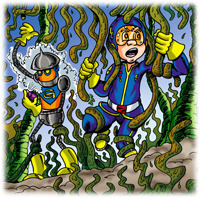 Together they take on the pursuit of the terrible Dr. Dogbreath, chasing him through the asteroids, oceans, and unusual plant life of Zack’s galaxy. Zack and GARG brave bad smells, squishy slime, giant ocean monsters and even motion sickness.
Together they take on the pursuit of the terrible Dr. Dogbreath, chasing him through the asteroids, oceans, and unusual plant life of Zack’s galaxy. Zack and GARG brave bad smells, squishy slime, giant ocean monsters and even motion sickness.
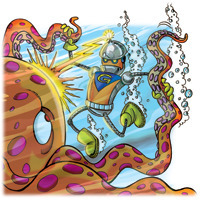
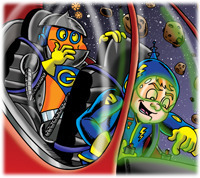 Will they finally capture Dr. Dogbreath, or will he escape their grasp? That will all depend on where your imagination takes you. Who knew 15 pages could hold so much excitement?
Will they finally capture Dr. Dogbreath, or will he escape their grasp? That will all depend on where your imagination takes you. Who knew 15 pages could hold so much excitement?
Check out this gorgeous, high-quality color book in softcover, hardcover, or eBook formats. Available from Amazon, Barnes and Noble, the iBookstore, and other online booksellers.
Want info on other new releases by Don Winn? Sign up for Don Winn’s Cardboard Box Adventures newsletter. It’s published every few months, so no need to worry about inbox overload. Don’t forget you can follow Don’s blog via email using the button below.



July 25, 2013
The Power of Imagination: Problem Solving
 Over the last few years I’ve talked a lot about the importance of nurturing imagination in kids. After all, the name of this company—Cardboard Box Adventures—is inspired by those big, empty cardboard boxes that are always favorite toys with kids. For them, boxes can be whatever they want to imagine—a rocket ship, a submarine, a fort, a tent, a cave—anything.
Over the last few years I’ve talked a lot about the importance of nurturing imagination in kids. After all, the name of this company—Cardboard Box Adventures—is inspired by those big, empty cardboard boxes that are always favorite toys with kids. For them, boxes can be whatever they want to imagine—a rocket ship, a submarine, a fort, a tent, a cave—anything.
My tenth (just released) Cardboard Box Adventures picture book, Space Cop Zack, Protector of the Galaxy, is a celebration of the power of imagination—and that’s why I’m thinking even more about imagination this week. I’ll talk more about Zack in next week’s blog, because today I would like to write about why imagination can be such a powerful aid in helping us solve problems.
While I was thinking about a few possible examples of imaginative problem solvers, I remembered something I once read about Philo T. Farnsworth. Farnsworth was a mathematician and inventor. He is also considered by many to be the father of television. (The photo above is of his statue in the National Statuary Hall Collection. He invented many, many other things during his lifetime.)
By 1918, technology had advanced to the point where speech and music could be transmitted across distances (by telephone or radio), but at that point in time no one had figured out how to send pictures. This was something that held great interest for Philo Farnsworth, then a twelve-year-old boy living and working on his uncle’s farm with the rest of his family.
How did a twelve-year-old become so interested in the idea of transmitting images electronically?
Moving to his uncle’s farm in Idaho was a pivotal point in Farnsworth’s life. The farm was powered by an electric generator, which fascinated him. He soon became so familiar with it that he was able to repair it whenever necessary. He also was able to adapt a small burned-out electric motor that he found one day in order to convert his mother’s hand-powered washing machine into an electric-powered machine.
Farnsworth’s outstanding aptitude for electronics and mechanics was soon fueled by some science and technology magazines he discovered in the attic of his uncle’s house. He read these magazines avidly. One of the topics they frequently discussed was the possibility of sending images across distances to a visual receiver at the other end…better known as television. But these articles were only theoretical discussions, because no one had quite figured out how to make that idea work.
This possibility greatly intrigued young Farnsworth. He thought about it often during the year before he turned thirteen.
Then one day, while he was plowing a field, the answer came to him. Looking back over the freshly-plowed furrows that divided the field into even stripes, he realized that an image could be sliced into many narrow rows, transmitted one row at a time, and then reassembled into the original image by the receiver.
Over the next several years, Farnsworth went on to develop this idea and by 1927 he sent his very first image (a straight line) from a transmitter in one room to a receiver in another room.
Without using his imagination, Farnsworth would have never looked at something perfectly ordinary—like a plowed field—and related it to a complex electronic theory that confounded many of the leading scientific thinkers of his time.
Not all kids will grow up to be inventors. And not all kids have outstanding electronic abilities like Farnsworth had even as a child. But all kids have imaginations. So encourage your children to use their imaginations! You will be assisting them to develop and retain a valuable quality that will help them solve problems long after they’re grown. Please leave a comment and share how you encourage your kids to use their imaginations!


July 18, 2013
Help Your Kids Love Creative Writing
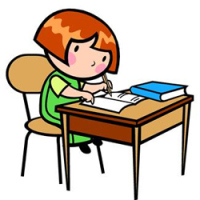 If as a parent, you think you have detected a potential talent for creative writing in your kids and you’d like to encourage this possible ability, here are a few suggestions. These are not creative writing exercises. Many of them don’t even involve writing. They are general activities for parents and children to do together that parents can adapt to their children’s specific circumstances.
If as a parent, you think you have detected a potential talent for creative writing in your kids and you’d like to encourage this possible ability, here are a few suggestions. These are not creative writing exercises. Many of them don’t even involve writing. They are general activities for parents and children to do together that parents can adapt to their children’s specific circumstances.
The goal is for parents to use these ideas to help their kids develop a deep love for expressing themselves through stories. Encouraging this love for stories as a form of self-expression will do much toward encouraging a reluctant writer to make the effort on their own someday. Although these ideas are fun activities for any parent and child to do together, I’ve made a special effort to make sure all the ideas in this list are dyslexic-friendly, because children who have difficulty with reading and mastering the mechanics of writing so rarely have the time, energy, or desire to attempt something that involves as much work as creative writing.
Write a story together. Pick two characters – one for the parent and one for the child. Pick a setting. Pick a situation. (Example: Two boys visit Scotland and find themselves in a situation involving the Loch Ness Monster.) Take turns telling the story as the parent writes (or types) it out. This is an obvious writing activity, but I include it because I have so often mentioned the benefits of reading with children and I can only imagine the even greater benefits that could come from writing with children. Alternate idea: Let your child dictate a whole story to you while you write or type it for them.
Think like a movie-maker together. Use storyboarding technique to map out the events of a story together. This activity may involve more drawing than writing, but the important thing is to develop characters and to tell their story. Put the drawings up on the wall or into a booklet and have your child narrate the story to you out loud from the pictures.
Think like an author together. Maybe no one’s in the mood for storytelling one day. That’s okay, it happens a lot to writers. But here’s a fun on-going activity that can lead to a future story. Even professional authors do this, so that’s why I can recommend it. Find an empty notebook. Then get a bunch of old magazines and look at pictures together. If you see a picture that looks like the setting of the story, cut it out and stick it in your notebook on the settings (or scenery) page. If you see a picture of a chair that the mom in your potential story inherited from her grandmother, put it in your notebook on the Mom page. Your story will grow and change as you add different pictures, but it will flow quickly when you do get around to writing it down. (or having it dictated to you).
Develop characters together. Create a character. Start making a list (written or verbal) about the character. (Let’s say you pick a girl.) What is her name? How old is she? What is her favorite color? Who is her best friend? What is her favorite television show? This can go on for as long as you want it to. (I read somewhere of an author who actually put together a Pinterest page for a character in one of her novels, where she collected pictures of fashions her character liked, vacation spots the character wanted to visit, etc.)
Make question stories together. This is something you can do on the go or while you’re waiting in line. Give your child a setting and a situation in the form of questions and have them tell you a story about it. For example: What if you were a small elephant lost in the park? How would you feel? What would you do?” Use “What if” and “What happens next” questions. Throw an occasional complication into the story. “What if you (the small elephant) almost stepped on a dog?” Tailor the settings and questions to your child’s interests, of course. The small elephant is only an example. Older kids will need more complicated questions/scenarios.
These are just a few ideas to help kids learn to love using stories as a means of self-expression. You may have some ideas of your own. Please feel free to share them here.


July 8, 2013
Creative Writing And Dyslexia: A Worthwhile Challenge
 The Great Gatsby has been getting a lot of attention lately with the success of the latest movie adaptation ($51 million the first weekend, according to Forbes). The book itself is a staple of American literature and is considered by many to be a contender for the title of one of the most iconic American novels of all time. It is currently the second-best selling book in the US. This year so far, people have purchased 185,000 copies of the eBook alone.
The Great Gatsby has been getting a lot of attention lately with the success of the latest movie adaptation ($51 million the first weekend, according to Forbes). The book itself is a staple of American literature and is considered by many to be a contender for the title of one of the most iconic American novels of all time. It is currently the second-best selling book in the US. This year so far, people have purchased 185,000 copies of the eBook alone.
Interestingly, this book that has such a marked place in American literature and history and that has influenced so many millions of people worldwide came from a unique source. F. Scott Fitzgerald, author of The Great Gatsby, suffered from a learning difficulty, most likely dyslexia.
Why is this of interest to parents of children with learning difficulties today? Because writing is one of the hardest things for a dyslexic person to do. It can be fraught with frustration, disappointment, shame, and feelings of unworthiness. Watching the apparent ease with which others seem to read and write can create a burning sense of injustice in a dyslexic child.
As a result, children with dyslexia rarely pursue writing as a career or even struggle past their comfort zone to distinguish themselves in school with writing. It’s just a fact that as humans, we tend to avoid doing things that just seem too hard. When mastering the basic mechanics of writing is such a struggle, dyslexic students are far less likely to have the energy or even the desire to write simply for the sake of expressing themselves creatively.
And yet if Fitzgerald had not struggled to express himself creatively, a major part of American cultural history would be missing.
Dyslexic or not, creative writing is not for everybody. But if your child has a bent for storytelling, if they get really involved with characters in stories they know, they may have a talent that you can help them nurture.
Although dyslexic students have a major disadvantage when it comes to creative writing (the struggle with language and the mechanics of writing and spelling, etc.) they may also have some unsuspected advantages. Here are a few:
Overcoming feelings of unworthiness, dealing with secret inner worlds of frustration, and facing one’s own difficult emotions can often make for the best and most inspiring writing. Embracing and learning to do difficult things puts us in touch with our finest, highest selves. It is an experience that brings dignity, a sense of well-earned pride and a tremendous feeling of accomplishment. These are all themes commonly found in fiction (also certain kinds of nonfiction), and a dyslexic student has some first-hand experience with them in one form or another.
Due to possible language difficulties, dyslexic students may be forced to become extra-observant. This comes into play when talking with others because they may become highly attuned to body language, gestures, inflections, etc. This may also be evident in their ability to observe visual or even artistic details. In effect, they may become highly observant students of human nature and other details, which are invaluable qualities for a creative writer.
Additionally, dyslexic students can be very creative. They are often forced to do things a little differently than everyone else, and so they must look for new ways to do things on their own, not following anyone else’s example. This can help them to develop creative problem-solving skills. Again, this is a wonderful quality for a creative writer.
So what can parents do to encourage dyslexic children with a potential talent for creative writing to give voice to what they have to say? I’ll make a few possible suggestions next week, but in the meantime, this link profoundly illustrates the fact that the world would be missing some of its most famous authors if dyslexics and others with learning difficulties did not and could not push past difficult barriers.


June 23, 2013
CBA Summer of Imagination!
 Summertime is a time for freedom…freedom from school, homework, and super-busy schedules…and it’s also a great time to let your imagination run free! So I’ve decided to make this summer the Cardboard Box Adventures Summer of Imagination. I’ll be featuring lots articles this summer in this blog about creativity and imagination and of course, reading.
Summertime is a time for freedom…freedom from school, homework, and super-busy schedules…and it’s also a great time to let your imagination run free! So I’ve decided to make this summer the Cardboard Box Adventures Summer of Imagination. I’ll be featuring lots articles this summer in this blog about creativity and imagination and of course, reading.
In the meantime, here are a few activity ideas for kids that have lots of room for imagination. They can be adapted for kids of different ages:
New kinds of old games. Invent a new kind of hide-and-seek, or maybe a new and more complicated kind of capture-the-flag.
Create an obstacle course…either for kids or for toys.
Put on a short play. Find some dress-up costumes. Create a play around those costumes (it might end up being about Spider Man and a princess and half a zebra), either by writing it or by verbally planning it. (Kids have no problem reminding each other what to do or say.) Maybe you can even find some curtains for your stage area to make it extra-exciting.
Make a story chain. This is an old game. Let one person start a story and stop at an exciting part. The next person continues the story in their own way. Go around until everyone has added to the story. The last person gets to finish the story and everyone says, “The End!” After the story, kids could draw pictures to illustrate different parts of the story they created.
News report. Put together a news report of the day and present it to parents around dinnertime or whenever they’re ready. Start by saying something like, “This is __________ Family News for Friday, June 21” or “Welcome to Channel 6 News.” Have headlines for any events that happened during the day and tell about them in the news report. Don’t forget to include weather and any sports that may have happened during that day too. If kids are allowed to use a digital camera, phone, or tablet, they can take pictures throughout the day to go along with their newscast.
Buried Treasure. You need a yard or outdoor area you can dig in, at least two kids (or two teams of kids), some kind of “treasure” for each team that will be buried, something to dig with, paper and crayons. Separate each team have them figure out where they want to bury their team’s “treasure” outside in the yard. Then have each team draw a treasure map showing the location where they will bury their treasure. Then each team takes a turn going outside to bury their treasure in the spot they marked on the map. Then the teams exchange maps and race to see who can find the other team’s treasure first. To make the game more complicated, the first map could mark the location of a second map, that leads to a third map, that finally leads to the treasure. Alternate version: Skip the maps and have older kids make up riddles that tell the location of the treasure (or the next riddle).
Design a castle. You could draw the outside or inside or make a kind of blueprint, build a model…or even a sandcastle. I’m doing this myself right now and it’s pretty fun. I’m working on my next Sir Kaye book: The Lost Castle Treasure and I need a good map/blueprint of the castle in my story so I can keep track of where everything happens. If your kids come up with a cool castle that they design and want to share it, feel free to post a picture of it on my CBA Facebook page, or even the brand new Sir Kaye fan page on Facebook.
Have an amazing Summer of Imagination! And check back here all summer long for lots of information about why imagination is so good for kids.


June 16, 2013
Fun Activities to Fight the Summer Math Slide
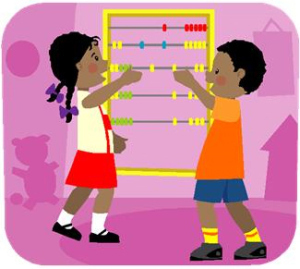 Last week I listed some tips on how to help kids maintain their skill level over the summer when it comes to reading. This week I thought I’d do the same thing for math. It can be quite a challenge to try to come up with activities that utilize math skills and seem fun and engaging to kids. I mean, let’s be brutally honest here: math is not the first thing that comes to either parents’ or children’s minds when thinking of fun summer activities. But here are some ideas to get you started:
Last week I listed some tips on how to help kids maintain their skill level over the summer when it comes to reading. This week I thought I’d do the same thing for math. It can be quite a challenge to try to come up with activities that utilize math skills and seem fun and engaging to kids. I mean, let’s be brutally honest here: math is not the first thing that comes to either parents’ or children’s minds when thinking of fun summer activities. But here are some ideas to get you started:
Fractional Feast
Using big cookies, tortillas, or some other round flat food like a pizza, cut the food into quarters, eighths, etc. with your kids and help them see how often fractions are used to create serving sizes in their favorite foods. Throw some rectangular foods into the mix to show kids that the method of making fractions applies to more than one kind of shape. Then let the kids take turns being a “waiter” while the other kids place orders using fractions. (As in, “I would like ¼ of the chocolate cookie, 3/8 of the sugar cookie and 1/8 of the pizza.”) Make a game of it to see who gets it right.
Recipe Math to the Max
Cook with your kids and teach them how to follow written recipes. This is a great way to brush up on reading and math. Take it a step further and teach them how to double, triple, or halve simple recipes and show them how to do the math to make it work. Be sure to supervise to avoid any unwanted kitchen catastrophes. (Hint: Some websites like allrecipes.com will let you find a recipe, enter the number of servings you would like to produce and they will calculate the changes for you…if you need to check the math, this could be a great resource.)
Fitness Goal Charts
Help your kids set some reasonable performance goals for the summer for any physical activities that they enjoy, such as swimming, bike riding, hiking, jumping rope, etc. Encourage them to use a graph or chart to keep track of their progress each week (or each day that they do the activity). This can help keep them motivated to reach their goals, graphing their progress helps them see real-world applications of things they’ve learned in the classroom. Take it a step further and use their charts to teach them to predict trends in performance to see how long it will take to reach a certain fitness goals.
Multiplication Challenge Card Games
Write simple multiplication fact problems using numbers from 1 to 10 on some index cards. To play, two children will shuffle the cards and divide them into two equal stacks, one stack per player. Each player will then turn over the top card and call out the answer to his or her multiplication question. The player with the higher answer wins the round and earns both cards. If either player gives an incorrect response, he or she will automatically lose the round. If both players responded correctly, the cards will be returned to the bottom of each player’s deck and play continues. If both players cards have the same value, place three cards facedown, and one face up. The player whose face up card has the highest value wins all 10 cards. (Like the game War, but with multiplication). The game is over when either player loses all his or her cards. The player with the most cards wins. This game idea is courtesy of this website.
Variation: This game is for two players. Use a regular deck of cards. Remove the face cards and set them aside, you don’t need them for this game. Shuffle, deal, and play the cards as if you were playing the game War, but instead of the highest card winning, the player who can add or multiply the two numbers on the cards first wins the hand. (For instance, if one player played a two of hearts and the other played an eight of clubs, the winner would be the first one to say that 8×2=16.) The player with the most cards wins.
Forcing children to read or do math at any time usually has a negative result. The real trick is to find books and math activities that are of high interest to your child. For example, kids who are excited about a sport like baseball could be encouraged to follow the statistics of their favorite teams, learn how to figure batting averages, and how many games need to be won to make the playoffs. Alternately you can find short lessons to show kids how math is an important part of everyday life.
For even more fun ideas, log on to http://www.mathplayground.com. This site has activities for grades One through Six, and even a free iPad app called “Shuttle Mission Math.” Let’s all have a fun, productive summer!


June 9, 2013
Avoid The Summer Reading Slide
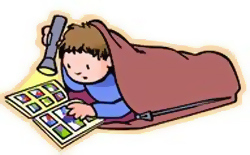 The school year is pretty much over for most students, and families are making summer plans. For some that will mean vacations, trips to libraries or museums, or maybe camp. Others may be relaxing closer to home. Whatever the plans, one unintended consequence of the summer break from school is a “summer slide” or learning loss.
The school year is pretty much over for most students, and families are making summer plans. For some that will mean vacations, trips to libraries or museums, or maybe camp. Others may be relaxing closer to home. Whatever the plans, one unintended consequence of the summer break from school is a “summer slide” or learning loss.
In 2011, the RAND Corporation published a study describing how United States students lose an average of one month of learning in reading and math skills over the summer. Lower income students may lose up to two months of learning during the summer because they often don’t have as much access to vacations or other educationally stimulating venues.
Let’s do the math: if the average school year lasts 8 months, and two months of education could be lost each year based on the summer slide statistic, potentially 25% of the school year’s value in critical areas like reading and mathematics simply vanishes—evaporating into thin air. (That is potentially 60 days of getting the kids up, getting them dressed and fed, dealing with homework drama, packing lunches and getting everyone out the door mostly on time…days you probably didn’t want to go through all that hassle, but you did anyway, because that’s what you do…it would be a shame for all that hard work to go to waste, right? Keep reading.)
The educational stakes for children are high, because these educational losses actually compound summer after summer. According to the study, 20% of third-graders in one state could not read at grade level. By the eighth grade, the number of students reading below grade level had increased to 33%. The accumulation of several years’ worth of summer reading loss greatly contributes to these statistics.
The good news is that small efforts to counteract the summer slide bring big returns. If a student reads as few as five books during the summer, it can prevent learning loss in reading skills. What can you do to help your children?
Read to your children or to a child you know. There is no better way to encourage reading than to read aloud with our young ones.
Encourage an interest in reading. This is more challenging for students with dyslexia or other learning differences. Talk with your kids and discover what their interests are. Ask a lot of “why” questions, and then find the answer together through reading—using online sources counts too. It’s still reading.
Foster a sense of achievement. Colored stickers, gold stars, or other marks of completion can encourage kids to compete with themselves to read more and more.
When kids get together over the summer, have each child take a turn talking briefly about things they have read. It doesn’t have to be a long complicated discussion. Sixty to ninety seconds about each book is enough to stimulate an interest in reading among other kids in the community. This also gives the kids who have read books something to share that they can be proud of.
For children who really struggle with reading, or who cannot imagine reading ever being pleasurable, check your local library for audiobooks. Listening to books can be a real inroad into the heart of the challenged reader. The more they can develop a love of story, the more they will be inspired to discern their own learning and reading style and overcome their limitations. If they enjoy audiobooks, it can help dispel some negative emotions they may have previously associated with the idea of reading for pleasure.
This summer, as each family finds more fun reasons to read I look forward to hearing from you on my Cardboard Box Adventures Facebook page. Let me know when you read your five books (or your first summer book, or your second…), including audiobooks. Which ones did you read? What did you like about them? Would you recommend them to others? Let’s make this a great summer! Happy Reading!




